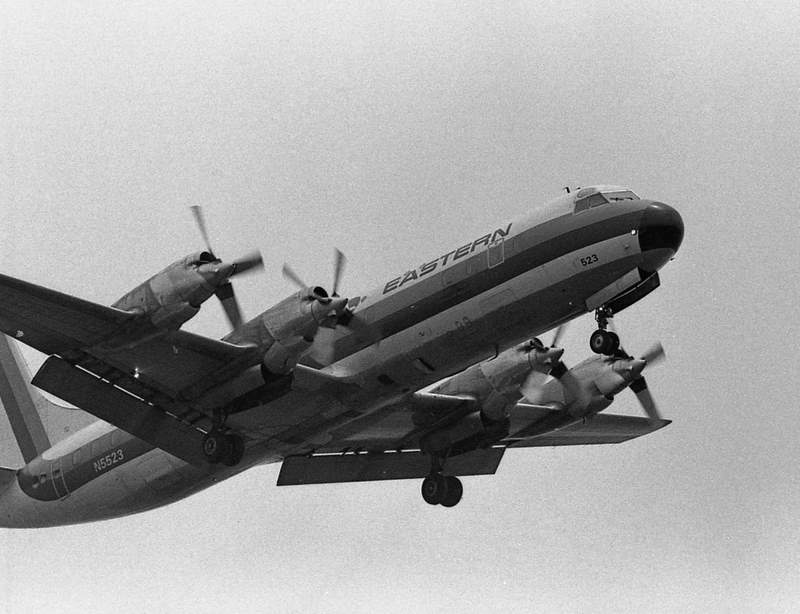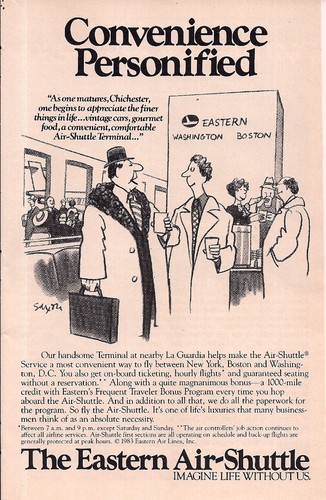Delta Points pointed me to a Twitter conversation about whether airlines should keep spare planes around to protect against irregular operations.

It’s an interesting conversation because:
- There are many times when major airlines do have what are effectively spare aircraft, especially at their hubs.
- Keeping spares used to be an airline marketing tactic.
- But major airlines for the most part don’t need spare planes when they have spare (unsold) seats.
Hub Flexibility Creates ‘Spare Aircraft’ at the End of the Day
At the end of the day in Atlanta, there’s a whole airport full of planes. If the last flight of the night to a given destination goes mechanical, the airline can substitute the plane for another aircraft that would otherwise be overnighting there. That gives Delta the full night to get the plane fixed for its morning runs, instead of making a planeload of passengers wait — and more importantly:
- Risking the crew going over maximum allowable duty hours
- Forcing the crew to land at their destination too late to be able to make their morning flight back (the airline would have to delay the crew’s morning trip to ensure they receive minimum required rest)
If you’re at an outstation this isn’t as helpful. Your airline might have to fly a new plane to you, as United apparently did with a Lubbock – Houston flight yesterday when the plane’s pilot and co-pilot had an altercation.
But even if airlines had spare aircraft, those wouldn’t likely be positioned at outstations anyway. They’d be at hubs.
Spare Aircraft Were a Marketing Gimmick
In the distant past having inexpensive, paid-for, backup equipment was used as a marketing tactic. The Eastern Airlines Shuttle concept began with no advance tickets and no check-in even. If you showed up for a flight, you were promised a seat. There was hourly service, more seats than passengers, so this usually wasn’t a problem. Occasionally though the flights were oversubscribed and the airline made a big show of pulling out another plane for just that one last passenger (or – on the Sunday after Thanksgiving the first year of service – for more than one additional planeload of passengers for the last flight of the night).

The Eastern Shuttle, which began in 1961, was sold and became the Trump Shuttle in 1989. It then became the USAir Shuttle in 1992. Technically it was only part-owned by them until 1997 — the airline took a 40% stake and a 10 year management contract, while Trump’s creditor banks owned the rest.

Fifteen years ago I would fly the shuttle and even discount tickets were in practice fully changeable. You’d get on the first flight you showed up for. There were no seat assignments. It was all coach, and snacks were served on the short flights.
In 2003 US Airways added first class to the Shuttle — not because they thought they could sell first class seats, but removing coach seats didn’t hurt their ability to carry passengers since the planes rarely went out fully booked. Instead this meant they didn’t even need a dedicate subfleet of aircraft for the operation, and for all intents and purposes the ‘Shuttle’ became just like any other route.
Major Network Carriers Don’t Need Spare Planes When They Have Spare Seats
In “Why I Won’t Fly Spirit Airlines” I explained that I like the Spirit Airlines concept, I think it’s great they exist and they make transportation affordable for many people who otherwise wouldn’t be able to fly. And they provide real competition for the major network carriers, so I often pay a lower fare when I book a legacy airline instead.
They don’t support TSA PreCheck, which is frustrating enough. But the biggest issue I have is that they don’t have a backup network of flights. They don’t have a big, redundant route network. That’s at the heart of their business model, it’s how they make money. But it also makes them less reliable.
Large network carriers have redundancies that give you a better chance of getting where you’re going within a reasonable period of time after your originally scheduled arrival time when things go wrong.
If my Austin – Dallas flight on American cancels, I can reroute through Chicago. Or Charlotte. Or Phoenix. Or Los Angeles. Or Miami. Or New York JFK. I need a seat that gets me to an airport that has a seat to my final destination.
It’s not always necessary to have spare aircraft, when you have slack in a large network that gives passengers multiple options to get where they’re going.
Two important caveats:
- That doesn’t work if you have to get where you’re going on a tight schedule. Re-accommodation usually means a delayed arrival. Bringing a spare plane to your city would too, though.
- You’re much better-positioned to be re-accommodated if you have elite status with your air carrier, either for clearing the standby list on a fully booked flight or for getting assistance quickly.


I think the one thing this article misses is that flights are more full than ever and airlines have gotten much better at banking flights and making almost too little slack in their schedules (ahem UA) so that when a plane goes mx, or is just delayed a bit because of stupid bag policies that have changed the way people carry on, there is no where to turn except to continually delay that plane the rest of the day.
In other words, if an inbound plane use to be 30 mins or an hour late, you could reasonably except to leave on time because no legacy carrier would ever schedule such a short turn-around. If the plane was going to be 2 hours late, at a hub at least, you could probably sub in another plane that just arrived and do a swap as it wasn’t going to need to be used for another two hours and the first plane could fly the second plane’s route when it arrived (and both flights could still leave on time).
Obviously long turn-arounds times are not the most efficient way to run an airline (its something WN figured out very early on), and the legacy carriers caught on. They now have very efficient operations, at least on paper, as long as the weather is perfect and the planes fly the way they are suppose to. Unfortunately if any of those factors don’t align (hint often) the system buckles and passengers look for alternatives.
I used to work at the old EWR in the early 70’s as a security baggage inspector (during the period of all the Cuban hijackings-worked with a company called Wackenhut))and would hop on one of those Eastern Electra’s pictured after work was done heading to see friends in the Boston area. All you had to do was fill out a boarding card with your name and address and if I remember correctly, I was able to pay with cash onboard. Thanks for posting that picture and bringing back old memories when traveling was just a little bit easier then it is today.
Remember that profit on a flight segment can be down in the thousands of dollars. The cost to rebook a plane full of pax can be many times that.
With the cost of capital is low, having a plane sit idle represents very little opportunity cost.
I’d fully expect that there is strategic redundancy, and I would also expect the Republics/SkyWests etc to do the same for similar reasons.
I was recently on a Delta flight out of JFK that had to go back to the gate twice because of mechanical issues. I wondered why they couldn’t have just substituted a spare plan–it seems like this would have been much faster than the almost five hours that we waited for the repairs to be made.